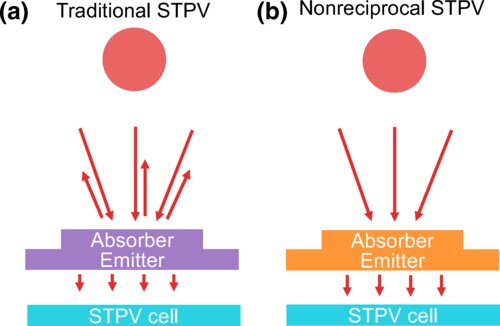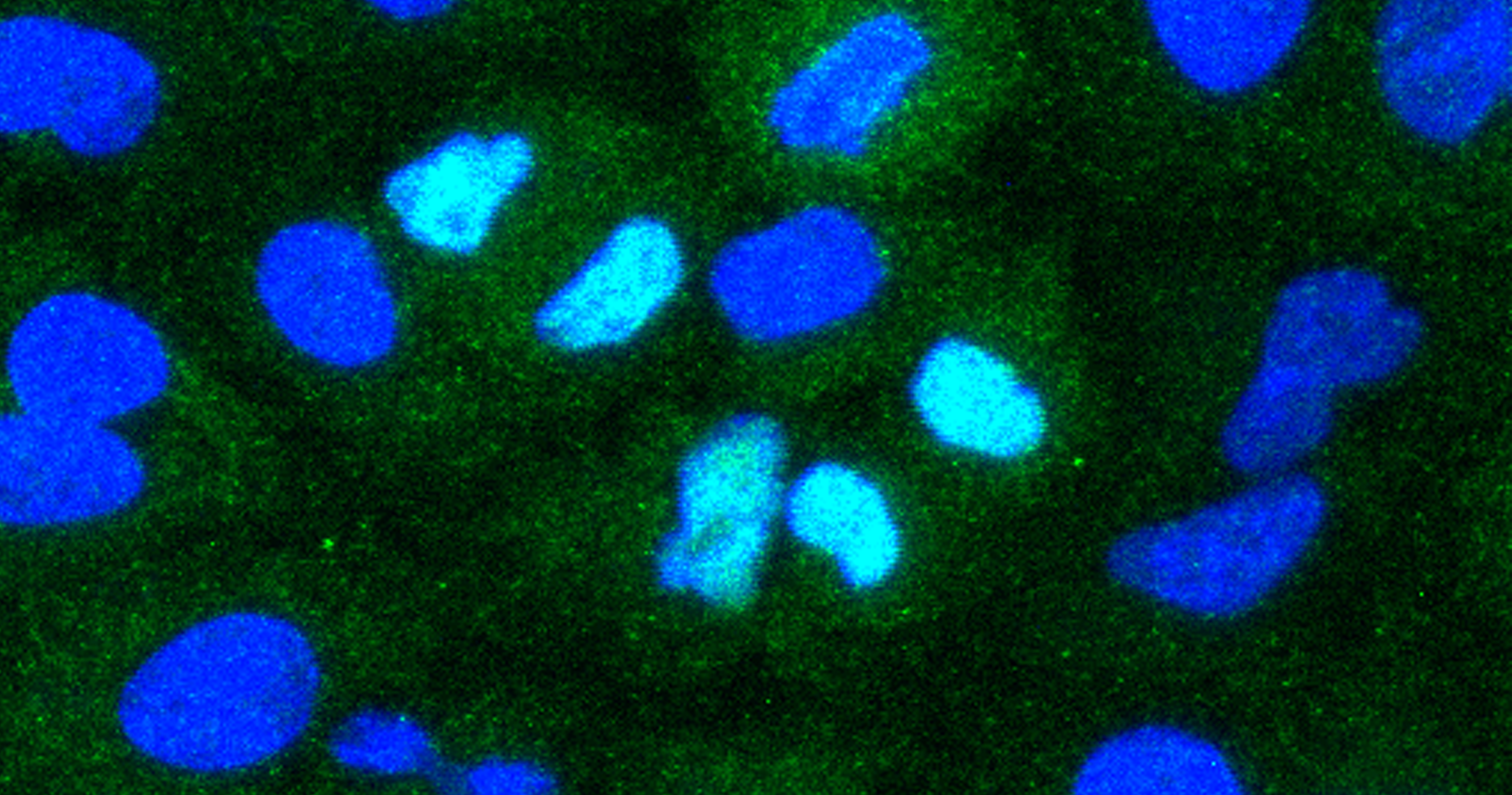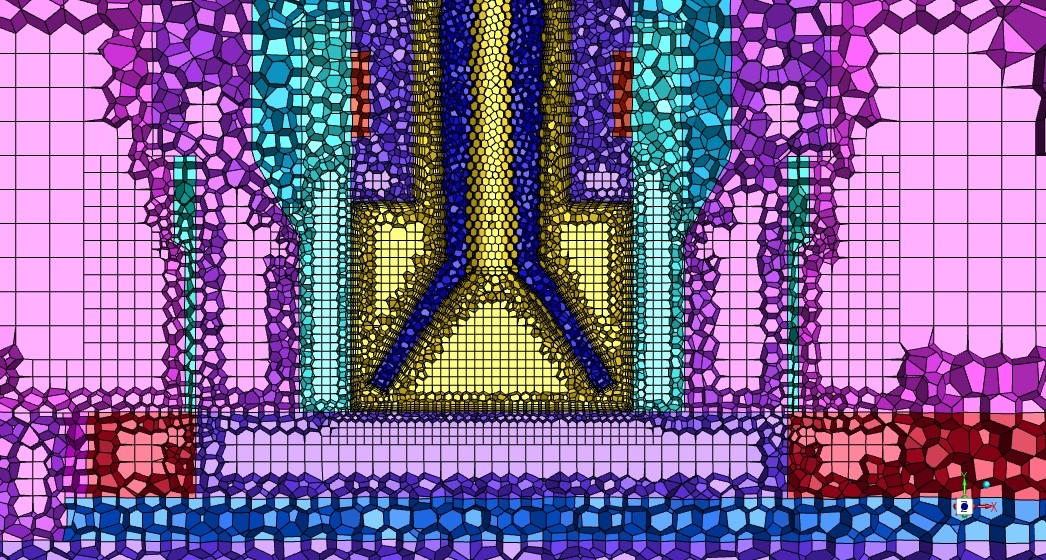
(a) Illustration of traditional STPV and (b) nonreciprocal STPV. The absorber of traditional STPV has back radiation towards the sun. In nonreciprocal STPV, the back emission from the intermediate layer is suppressed, and more incoming energy is directed towards the cell. The nonreciprocal behavior of the intermediate layer can be made wavelength selective.
Credit: Sina Jafari Ghalekohneh et al, Physical Review Applied (2022). DOI: 10.1103/PhysRevApplied.18.034083
The great inventor Thomas Edison once said, “So long as the sun shines, man will be able to develop power in abundance.”
His wasn’t the first great mind to marvel at the notion of harnessing the power of the sun; for centuries inventors have been pondering and perfecting the way to harvest solar energy.
They’ve done an amazing job with photovoltaic cells which convert sunlight directly into energy. And still, with all the research, history and science behind it, there are limits to how much solar power can be harvested and used – as its generation is restricted only to the daytime.
A University of Houston professor is continuing the historic quest, reporting on a new type of solar energy harvesting system that breaks the efficiency record of all existing technologies. And no less important, it clears the way to use solar power 24/7.
“With our architecture, the solar energy harvesting efficiency can be improved to the thermodynamic limit,” reports Bo Zhao, Kalsi Assistant Professor of mechanical engineering and his doctoral student Sina Jafari Ghalekohneh in the journal Physical Review Applied. The thermodynamic limit is the absolute maximum theoretically possible conversion efficiency of sunlight into electricity.
Finding more efficient ways to harness solar energy is critical to transitioning to a carbon-free electric grid. According to a recent study by the U.S. Department of Energy Solar Energy Technologies Office and the National Renewable Energy Laboratory, solar could account for as much as 40% of the nation’s electricity supply by 2035 and 45% by 2050, pending aggressive cost reductions, supportive policies and large-scale electrification.
How Does it Work?
Traditional solar thermophotovoltaics (STPV) rely on an intermediate layer to tailor sunlight for better efficiency. The front side of the intermediate layer (the side facing the sun) is designed to absorb all photons coming from the sun. In this way, solar energy is converted to thermal energy of the intermediate layer and elevates the temperature of the intermediate layer.
But the thermodynamic efficiency limit of STPVs, which has long been understood to be the blackbody limit (85.4%), is still far lower than the Landsberg limit (93.3%), the ultimate efficiency limit for solar energy harvesting.
“In this work, we show that the efficiency deficit is caused by the inevitable back emission of the intermediate layer towards the sun resulting from the reciprocity of the system. We propose nonreciprocal STPV systems that utilize an intermediate layer with nonreciprocal radiative properties,” said Zhao. “Such a nonreciprocal intermediate layer can substantially suppress its back emission to the sun and funnel more photon flux towards the cell.
We show that, with such improvement, the nonreciprocal STPV system can reach the Landsberg limit, and practical STPV systems with single-junction photovoltaic cells can also experience a significant efficiency boost.”
Besides improved efficiency, STPVs promise compactness and dispatchability (electricity that can be programmed on demand based on market needs).
In one important application scenario, STPVs can be coupled with an economical thermal energy storage unit to generate electricity 24/7.
“Our work highlights the great potential of nonreciprocal thermal photonic components in energy applications. The proposed system offers a new pathway to improve the performance of STPV systems significantly. It may pave the way for nonreciprocal systems to be implemented in practical STPV systems currently used in power plants,” said Zhao.
Original Article: Solar Harvesting System has Potential to Generate Solar Power 24/7
More from: University of Houston
The Latest Updates from Bing News
Go deeper with Bing News on:
Solar thermophotovoltaics
- Feed has no items.
Go deeper with Bing News on:
Nonreciprocal STPV systems
- Renewable Agriculture and Food Systems
This journal utilises an Online Peer Review Service (OPRS) for submissions. By clicking "Continue" you will be taken to our partner site https://www.editorialmanager ...
- LifeSource Water Systems Reviews
See reviews below to learn more or submit your own review. LifeSource Water Systems sells, installs and services home water treatment systems. It offers solutions for water softening, filtration ...
- Best mesh Wi-Fi systems of 2024
The best mesh Wi-Fi systems are able to fill your entire home and even your backyard with a strong Wi-Fi signal. By upgrading to one, you won’t have to worry about Wi-Fi dead zones and you also ...
- Embedded Systems
We caught up with NXP in Nuremberg at Embedded World 2024 as part of our promotional coverage for the event. Brian Carlson – Global Marketing Director, Automotive Processors at NXP – discusses the ...
- Best Combat Systems In RPGs
RPGs offer unique combat systems that combine strategy, timing, and skill appealing to all gamers. From turn-based classics like Dragon Quest to real-time favorites like Ys, RPGs continue to innovate.










